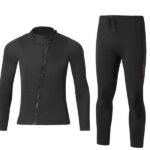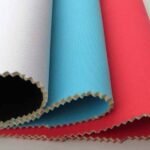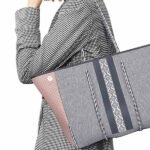Ever felt that sudden shock when you slip into chilly ocean water, only to be greeted by a comforting layer that feels like a warm hug? That’s the magic of a wetsuit—an ingenious garment that turns freezing surf into cozy fun.
Wetsuits are primarily made of neoprene foam bonded to textile liners, with glued and blind‑stitched seams sealed by liquid or tape. Multiple thicknesses (2–7 mm) and coatings—like smoothskin or titanium—enhance warmth, flexibility, and durability. Understanding these materials helps you pick a suit that balances insulation, mobility, and longevity for activities from surfing to scuba diving.
Last winter, a group of cold‑water surfers in Maine tested prototype “nano‑insulated” wetsuits that integrated graphene‑coated neoprene. They braved sub‑40 °F waves without shivering—a breakthrough that began with rethinking what goes into a wetsuit’s layers. Ready to uncover exactly how your wetsuit keeps you snug and what innovations are reshaping the next generation? Let’s dive in.
What Is a Wetsuit and How Does It Work?

A wetsuit is a close‑fitting garment of neoprene foam that traps a thin water layer against your skin. Body heat warms this layer, while neoprene’s closed cells insulate against external cold, enabling thermal protection in water.
-
The Trapped Water Principle
- Layer of Water: A few milliliters enter between suit and skin.
- Heat Exchange: Your body warms this layer, acting as insulation.
- Neoprene Barrier: Closed‑cell foam prevents heat loss to the colder external water.
-
Types of Wetsuits
Style Coverage Typical Use Full Suit Neck to ankles Cold water surfing, diving (≤60 °F) Springsuit Short arms/legs Warm water activities (>70 °F) Farmer John Sleeveless torso Scuba diving core warmth Steamer Hooded suits Polar exploration -
Real‑World Example
A 3 mm full suit allows comfortable surfing in 60 °F to 68 °F water, while a 5 mm suit extends use down to 50 °F. -
Critical Perspectives
- Fit vs. Comfort: Too tight restricts movement; too loose lets too much water flush.
- Suit Thickness vs. Flexibility: Thicker neoprene insulates better but hampers paddling and kicking.
What Is Neoprene and How Is It Manufactured?

Neoprene is a synthetic chloroprene rubber formed by polymerizing chloroprene monomers. It’s expanded with nitrogen gas to create closed‑cell foam, then calendared into sheets at specific densities (20–80 kg/m³) to achieve desired buoyancy and insulation.
-
Neoprene Chemistry & Foam Formation
- Polymerization: Chloroprene → long‑chain polychloroprene rubber.
- Foaming Agent: Nitrogen gas injection creates micro‑cells for insulation.
- Curing & Sheet Formation: Heat and pressure produce uniform thickness.
-
Density Grades & Properties
Density (kg/m³) R-Value (insulation) Flexibility Typical Use 20–30 1.5 Very High Performance suits 30–50 2.0 High Recreational suits 50–80 2.5 Medium Cold‑water suits -
Quality Control in Production
- Uniform Cell Size: Avoid cold spots where insulation fails.
- Tear & Tensile Testing: ISO 37 for rubber durability.
- Compression Set: ASTM D1056 ensures foam rebound after flex.
-
Critical Perspectives
- Environmental Impact: Traditional neoprene is petroleum‑based; alternatives include limestone‑based foam.
- Trade‑Offs: Higher density boosts warmth but can reduce comfort and increase weight.
What Is the Best Material for a Wetsuit?

While neoprene remains the industry standard, limestone‑based and Yamamoto® ultralight neoprenes offer superior flexibility, reduced environmental footprint, and enhanced thermal performance. The best material balances insulation, stretch, durability, and sustainability for your water temperature and activity type.
-
Traditional vs. Advanced Neoprenes
Material Type Flexibility Warmth (R-Value) Eco Impact Petroleum‑Based Neoprene Medium 2.0 High carbon footprint Limestone‑Based Neoprene High 2.1 Lower CO₂ emissions Yamamoto® Shear‑Thickened Very High 2.2 Moderate footprint Nano‑Surf (Graphene‑Coated) Ultra High 2.3 Emerging technology -
Performance Metrics
- Stretch Ratio: Up to 800% elongation in Yamamoto® neoprenes versus 300% in standard foams.
- Axial Thermal Conductivity: Measured in W/m·K—lower is better for insulation.
-
User Case Studies
- Freedivers: Prefer ultra‑light neoprene for minimal drag and maximum flexibility.
- Commercial Divers: Opt for thicker limestone neoprene for consistent core warmth on long shifts.
-
Critical Perspectives
- Cost vs. Benefit: Advanced foams can double suit price—evaluate usage frequency to justify investment.
- Supply Chain Risks: Specialty neoprenes may face longer lead times and MOQ requirements.
Which Textile Liners and Fabrics Are Bonded to Neoprene?
Wetsuit neoprene is typically laminated with nylon, polyester, or trilaminate (nylon–rubber–nylon) linings. These fabrics add tear resistance, stretch control, and quick‑dry properties, while specialty brushed‑fleece liners boost warmth and comfort.
-
Common Liner Materials
Liner Type Weight (g/m²) Dry‑Time Abrasion Rating Nylon Tricot 180–220 5–10 min Medium Polyester Tricot 150–200 3–8 min High Brushed Fleece 300–400 10–15 min Medium Trilaminate 200–250 7–12 min Very High -
Bonding Techniques
- Chemical Adhesives: Solvent‑based glues ensure uniform coverage—tested via peel strength (ASTM D1876).
- Hot Press Lamination: Uses heat and pressure—water‑based adhesives are emerging.
-
Specialty Liners
- Graphene‑Enhanced Fleece: Boosts warmth without bulk.
- Polygiene® Antimicrobial Finishes: Reduce odor in long‑term use.
-
Critical Perspectives
- Liner Thickness vs. Mobility: Thicker liners trap more heat but constrain movement.
- Sustainability: Recycling laminated fabrics is challenging—explore take‑back programs.
How Are Wetsuit Seams Constructed and Sealed?
Wetsuit seams are bonded by glue and sewn (flatlock, overlock, or blind‑stitch) then sealed with liquid taping or external seam tape. Seam types balance durability, flexibility, and water entry prevention—crucial for warmth and longevity.
-
Seam Types & Characteristics
Seam Style Stitch Type Water Entry Flexibility Common Use Flatlock Visible flat stitch High High Warm water suits Overlock Overlapping cut stitch Medium Medium Budget suits Blind‑Stitch Interior lock stitch Low High Cold water suits Glued & Taped No stitch Very Low High Premium suits -
Seam Sealing Methods
- Liquid Seam Tape: Paint‑on sealant cures to a rubbery film.
- External Seam Tape: Nylon or polyurethane tape laminated over seams.
-
Durability Testing
- Hydrostatic Pressure: Simulates water ingress over time.
- Flex Fatigue: Repeated bend cycles to assess seam opening.
-
Critical Perspectives
- Cost vs. Performance: Blind‑stitch with tape costs 25–50% more but extends suit life significantly.
- Repairability: Glued seams are harder to repair in the field than stitched seams.
Which Thicknesses and Grades of Neoprene Are Available?

Neoprene thickness ranges from 1 mm (sun shirts) to 7 mm (polar diving). Common grades include 2 mm (warm water), 3 mm (temperate), 5 mm (cold), and 7 mm (extreme cold), balancing warmth and flexibility.
-
Thickness Guide
Thickness Water Temp (°F) Flexibility Ideal Uses 1–2 mm >75 Very High Sun protection, rash guards 3 mm 65–75 High Surfing, snorkeling 5 mm 50–65 Medium Scuba diving, kayaking 7 mm <50 Low–Medium Ice diving, polar expeditions -
Variable Thickness Designs
- Tapered Sleeves: 5 mm torso, 3 mm arms for mobility.
- Zoned Panels: Thicker chest/back panels, thinner shoulder/knee areas.
-
Critical Perspectives
- Thermal Comfort vs. Bulk: A 5 mm suit offers ~33% more insulation than 3 mm but restricts movement.
- Custom Grading: Tailor thickness zones per activity—optimize flexibility and warmth.
What Coatings and Treatments Enhance Wetsuit Performance?
Coatings like Smoothskin, SuperStretch, and titanium or ceramic laminates improve wind resistance, flexibility, and heat reflection. Additional hydrophobic or UV‑protective finishes extend suit life and boost thermal efficiency.
-
Surface Coatings
Coating Benefit Typical Thickness Smoothskin Windproof, quick donning 0.2 mm Triton™ Enhanced stretch, durability 0.3 mm Titanium Laminate Reflects body heat 0.05 mm -
Special Treatments
- Hydrophobic Spray: Reduces water absorption—improves dry‑time by 30%.
- UV Block Additives: Prevent neoprene degradation—extends usable life.
-
Emerging Technologies
- Graphene‑Infused Foams: Boost thermal conductivity control.
- Biodegradable Coatings: Lower environmental impact at end‑of‑life.
-
Critical Perspectives
- Durability vs. Feel: Some coatings add stiffness—test mobility after application.
- Reapplication Needs: Hydrophobic sprays wear off—consider user maintenance routines.
How Do You Choose the Right Wetsuit Material for Your Needs?
Align wetsuit material—neoprene type, liner, seam, thickness, and coatings—with your water temperature, activity intensity, and budget. Prioritize fit, flexibility, and durability based on conditions and personal comfort preferences.
-
Decision Matrix
Factor Consideration Recommendation Water Temperature °F / °C Choose thickness per guide Activity Type Intensity & duration High stretch for dynamic sports Budget Up‑front vs. lifecycle cost Invest in premium seams/coatings Eco‑Preferences Sustainable materials & production Limestone neoprene & water glues -
Fit & Sizing Tips
- Second Skin Fit: Minimal flush—ensure no bunching or pinching.
- Sizing Charts: Follow each brand’s size guide—body measurements vary.
-
Maintenance & Care
- Rinse Freshwater After Use: Remove salt and chlorine.
- Hang Inside Out to Dry: Protect coatings and liners.
- Store Flat or on Broad Hanger: Avoid creases in neoprene.
-
Critical Perspectives
- Over‑Customizing Risk: Too many features can overcomplicate and raise cost.
- Under‑Spec’ing Danger: Cheap suits may fail quickly in demanding conditions.
Ready to Craft Your Perfect Wetsuit with Szoneier?
Armed with insights into neoprene grades, liners, seams, and coatings, you now know what goes into a high‑performance wetsuit. At Szoneier, we combine 18+ years of R&D with flexible customization—free design services, rapid prototyping in 7–10 days, and ISO‑certified quality control—to create wetsuits tailored to your exact specifications.
- No MOQ Limit: Order a single sample or bulk production.
- Material Innovation: Limestone‑based, graphene‑enhanced, or traditional neoprene.
- Full-Service Support: From pattern design to package labeling.











